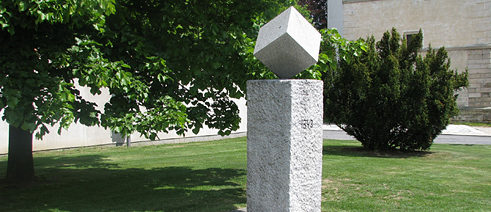Heirlooms
The story of the sugar cube

Many things that surround us daily arose through European exchange. The Goethe-Institut’s Heirlooms project tells their stories.
The tongs were in position, the lady swung the hammer. Then it happened: Instead of breaking a lump from her sugarloaf for her guests’ coffee, Juliana Rad hammered her finger. “Jacob, would you come here?” we may have heard her call on that summer day in 1841 at their home in Dačice. For, as luck would have it, Juliana’s husband, Jacob Christoph Rad, was the managing director of the local sugar refinery and after his wife’s mishap, he obligingly invented the handy sugar cube.
You can read about it on the website of the Heirlooms: European Stories project. The sugar cube is one such “heirloom,” a joint venture whose creation involved people from several European countries. Once Jacob Christoph Rad – an Austrian with Swiss roots – had invented it in Moravia, two Frenchmen and a Belgian perfected the process with which the cubes of sweetness are still pressed into shape today.
Stories of European exchange
“We encounter these stories of European exchange in many everyday objects and also in other cultural assets,” says Jakob Rondthaler, who is responsible for the project in the Goethe-Institut’s Internet editorial department. Thirty-five inventions and achievements that arose from European exchange will follow on the website and be presented in the form of articles, picture galleries or videos.These might be specialities, traditions, phenomena, musical genres or architectural styles – as long as they are connected to at least three European countries. Pilsner beer, the concept of cooperatives and the picture postcard are other Heirlooms presented on the web. “In the first step, we asked colleagues from other European Goethe-Instituts to submit proposals,” reports Rondthaler. They came up with sometimes surprising ideas and are now gradually expanding the online exhibition with contributions from a total of 13 countries. Visitors to the site can also send in suggestions.
The European aspect of cultural assets
Editing marathons – or edit-a-thons – are another part of the project explains librarian Bettina Radner, who coordinates the campaign at the Goethe-Institut. “Together with Wikimedia Germany we made contact with other Wikimedia groups in Europe.” Participants in writing workshops at the local institutes write articles about the Heirlooms for the online encyclopaedia Wikipedia or supplement existing articles. “We want the European aspect in the genesis of these cultural assets to be more visible,” says Bettina Radner. This way, Wikipedia users can also learn about it.One candidate for “European editing” is the saxophone. In the German Wikipedia article we read that it was invented by the Belgian Adolphe Sax, became popular later in France and was further developed as the tubax by Benedikt Eppelsheim in Munich. But more European references could be worked out, Rondthaler proposes: For example, to the saxophonist Candy Dulfer, popular in the Netherlands or the British band Spandau Ballet, legendary for their saxophone solos. Whether and how this knowledge will find its way onto Wikipedia will be the topic of discussion for the participants of the edit-a-thons in the coming months.
The original version of this article was published on 18 June 2018 in the Tagesspiegel supplement on the European Year of Cultural Heritage in 2018.